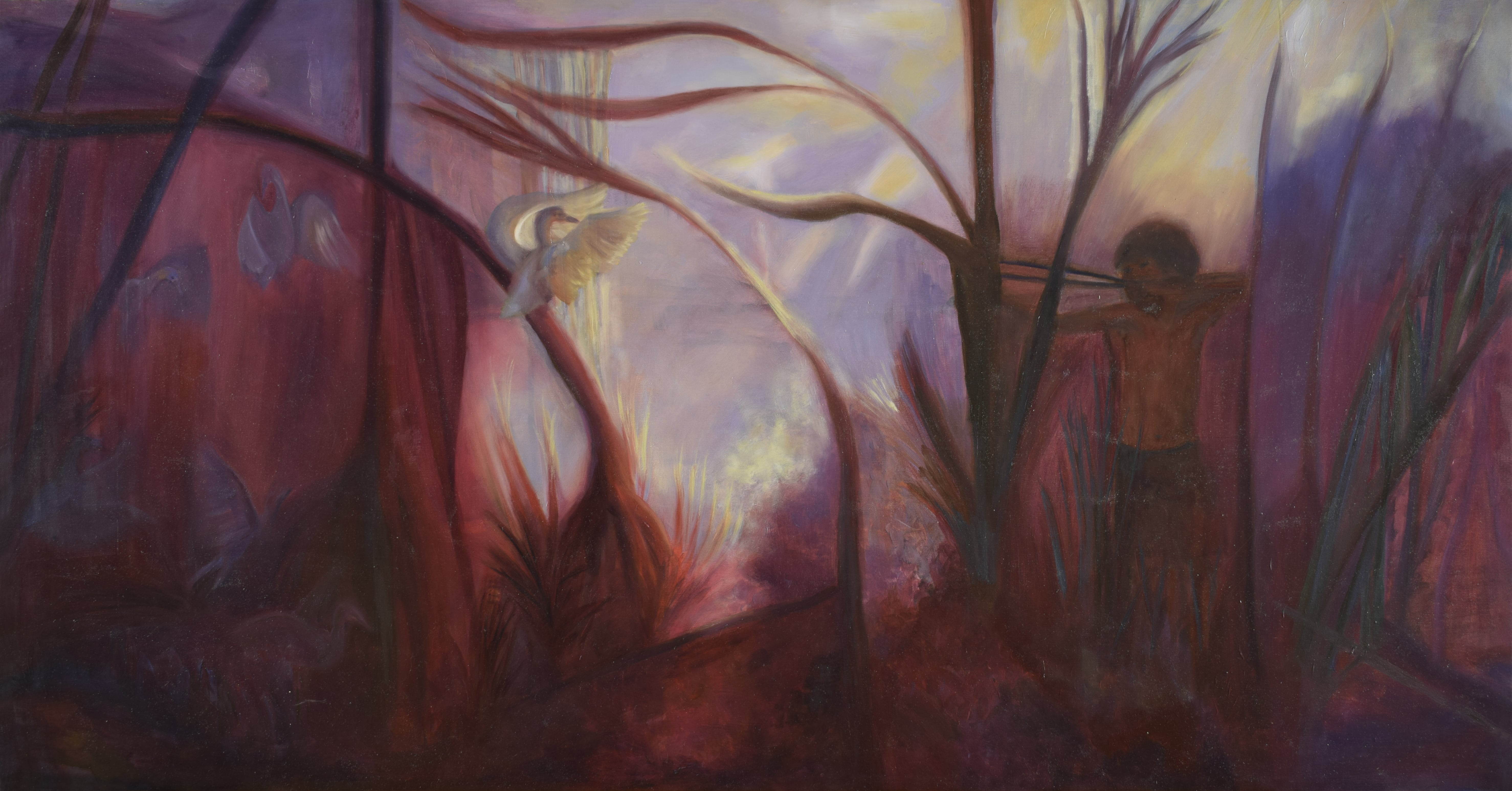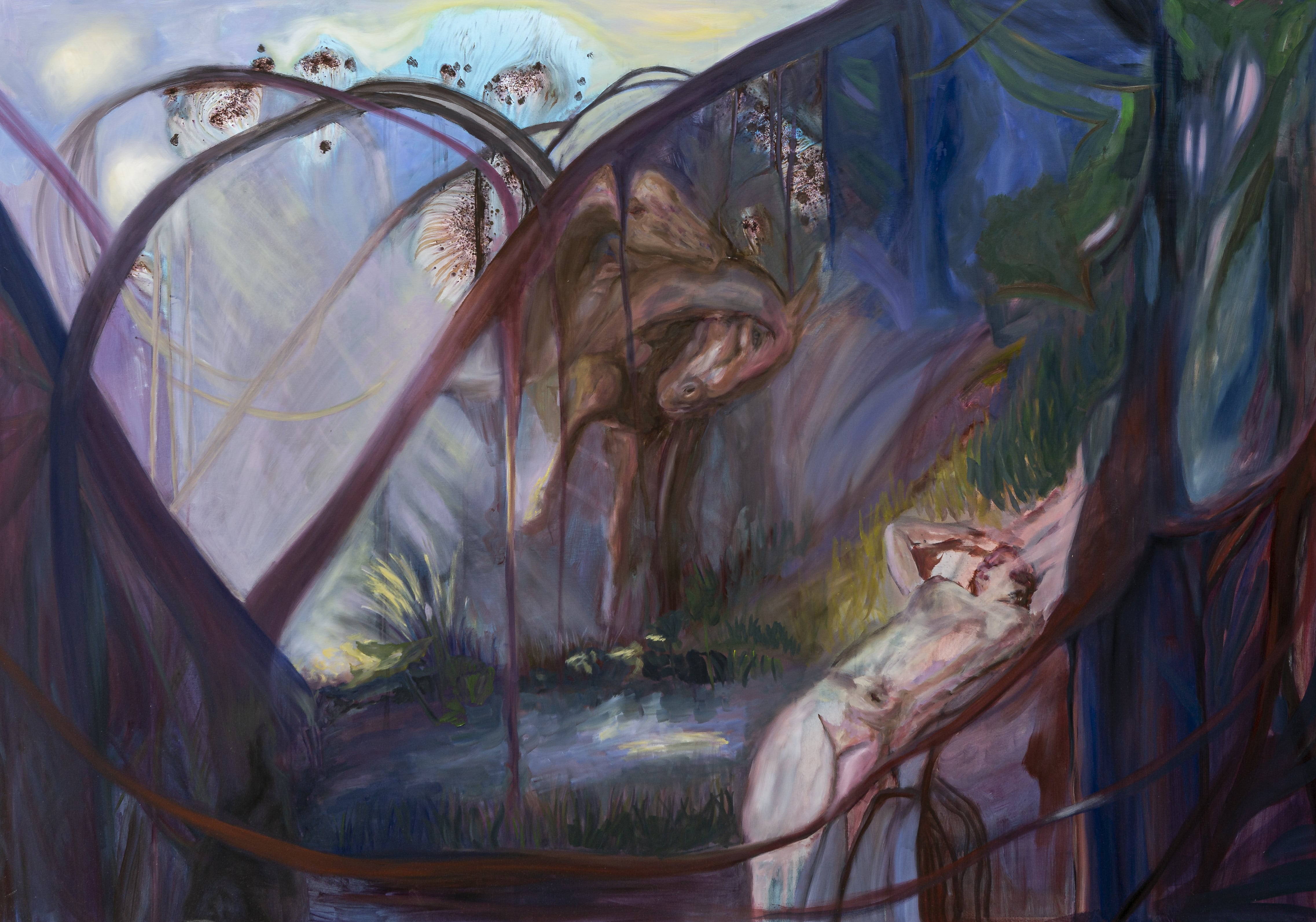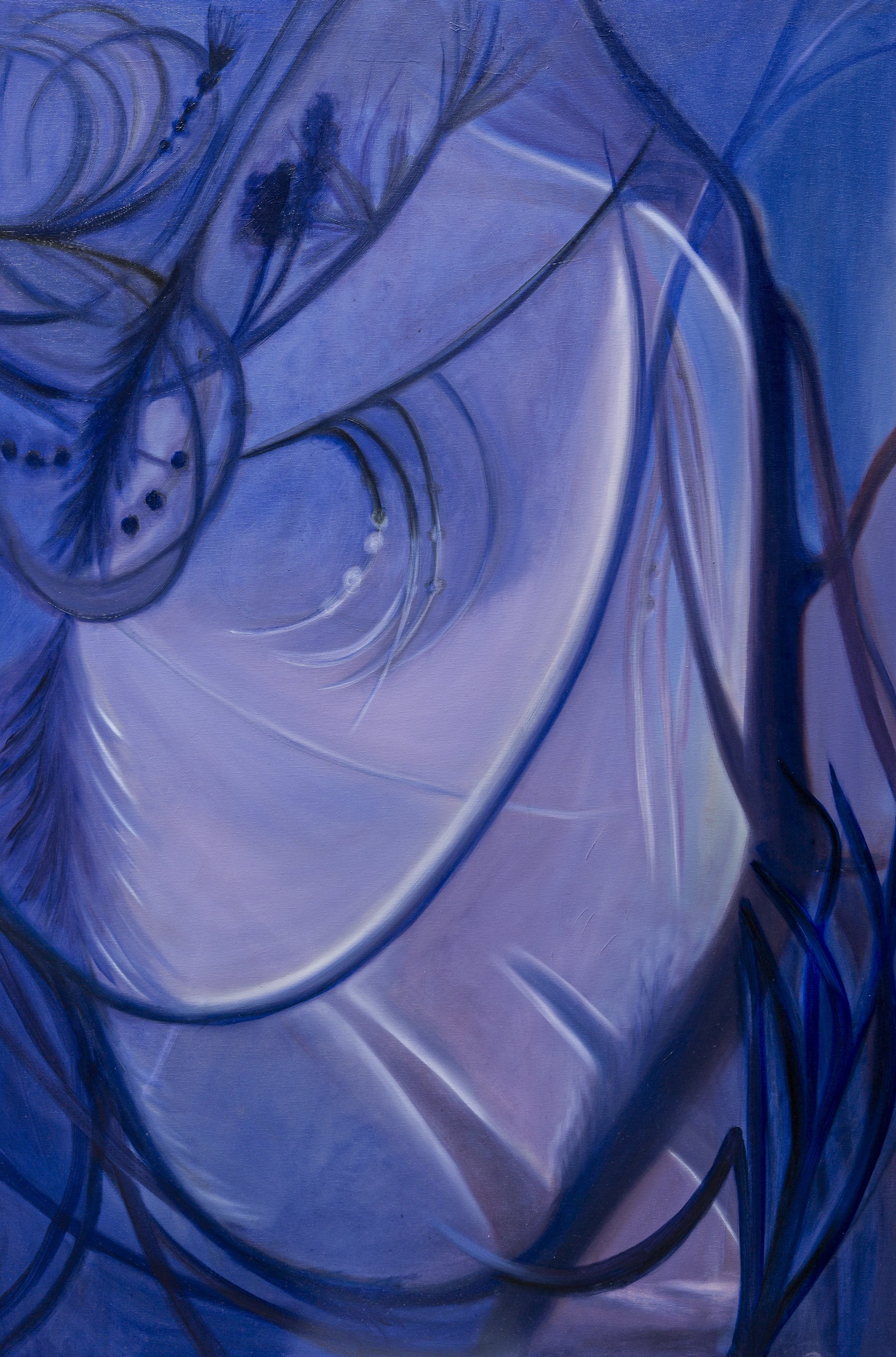Could you share a little about yourself and what first inspired you to pursue painting as your artistic medium?
I’m from São Luís, an island in Northeast Brazil rich in Indigenous and African cultural influences. Raised in a Protestant Christian family, I had little exposure to this cultural reality. As a result, my childhood and adolescent artwork focused on personal themes, literature-inspired illustrations, and subjects largely disconnected from my region's culture.
Over time, I became uncomfortable with my growing distance from Brazil. This unease led me to explore Brazil's identity dynamics, cultural formation, and the impacts of colonization on subjectivity. Gradually, I understood that this discomfort stemmed from the complexity of Brazilian identity, shaped by a colonial heritage that created ruptures and ambiguities.
This period marked a new phase in my art, deeply reflecting my journey of self-knowledge. Art became a way to explore my inner world, express complex emotions, and understand my history, helping me articulate my identity in today's fragmented world.

Where The Arrow Finds, 2024, oil on canvas, 50 x 150 cm
How has being a Stipendium Hungaricum Scholarship holder influenced your artistic practice and shaped your work?
Being a Stipendium Hungaricum recipient was a transformative chapter in my life. In Hungary, my present evoked memories of Brazil—memories that truly shaped me, unlike the idealized view I had of my connection to my roots. Nature played a key role, especially the river near my home in Hungary, which brought back memories of my family and dog by the river in Brazil. Observing and drawing Hungarian wild ducks reconnected me to Sundays spent feeding ducks at my aunt's house. These scenes influenced my paintings, not as mere memory reproductions but as reflections of the past and present. Through this, I began to see my history differently, recognizing new facets of the ambiguities and contradictions of my identity in my work.
Your recent exhibition, “Duas Margens – Um Fluxo”, explores fascinating themes. Could you tell us about the inspiration behind this project and the message you hope viewers take away?
This series of paintings reflects my experience as an immigrant and my search to understand identity anxieties. The challenges of living in a different country often manifested as melancholy, especially due to the dysfunctions in my own historical and cultural trajectory, such as Brazil's. I realised that my presence in this new context required constant dialogue with my past to legitimize and sustain my present experience. I now see my art as a cognitive strategy to navigate the contemporary world, where my identity concerns are both reflected and alleviated.
Duas Margens – Um Fluxo proposes alternative narratives with new symbols and meanings, encouraging viewers to engage with the complexities of fragmented life today. This is essential for creating a sense of belonging in the modern world. Nature also plays a key role in the series, serving as a universal connection for humanity rather than just a resource to be exploited.

Reminiscence, 2024, oil on canvas, 150 x 200 cm
As someone who bridges two cultural worlds, Brazil and Hungary, how do these influences come together in your art? Are they reflected in specific pieces?
I reflect on the relationship between my life in Hungary and memories of Brazil through organic forms and narrative symbols, often inspired by nature. In many of my paintings, nature is not just a background but the protagonist, expressing my subjective experience. This is evident in pieces like Interlúdio (Interlude) and Dream.
My first sketches were intuitive, often created after walks in a nearby park. One day, I decided to turn one into a painting, leading to the creation of Dream. Later, I realized that Hungarian plants intertwined with the Brazilian mangrove in this and other works.
 Dream, 2024, oil on canvas, 150 x 120 cm
Dream, 2024, oil on canvas, 150 x 120 cm
Interlúdio marked my first deep focus on organic forms. The painting came about during a walk to university when I forgot my headphones and, without music, found inspiration in the landscape. Those 20 minutes of solitude, seemingly insignificant, became the central inspiration for the following days' work and redefined my artistic direction.

Interlúdio, 2024, oil on canvas, 100 x 50cm
How have your art studies in Hungary broadened your perspective or introduced you to new techniques and approaches?
The creative freedom and experimental approach at my university helped me gain confidence in using materials like oil paint, natural pigments, and charcoal, which are integral to my work. These materials form an essential part of my artistic language, reflecting the flow of life, the transformations of memory, and our connection to nature.

Could you describe your artistic journey so far? Were there any pivotal moments or challenges that shaped your growth as an artist?
Being a foreigner broadened my worldview, revealing new ways of living and different versions of myself. This experience deepened my empathy, as I realized how essential people's help was in my family's absence. It also shaped my sensitivity and artistic expression, refined by the guidance of my professors in Hungary. I’m grateful to live this journey through the Stipendium Hungaricum scholarship.

Did the scholarship help you to connect with fellow artists, and expand your network?
During my studies, with the support of my university, I had the opportunity to participate in an artist residency. On this occasion, I met professional artists with whom I stayed in touch, often seeking their advice and technical guidance for my creative process. I believe the scholarship can continue to open paths and foster connections beyond the academic environment.
If you were inspired by the interview and Amanda’s artistic vision, follow her Instagram page, where she posts her current works and news: @amandalutiere
